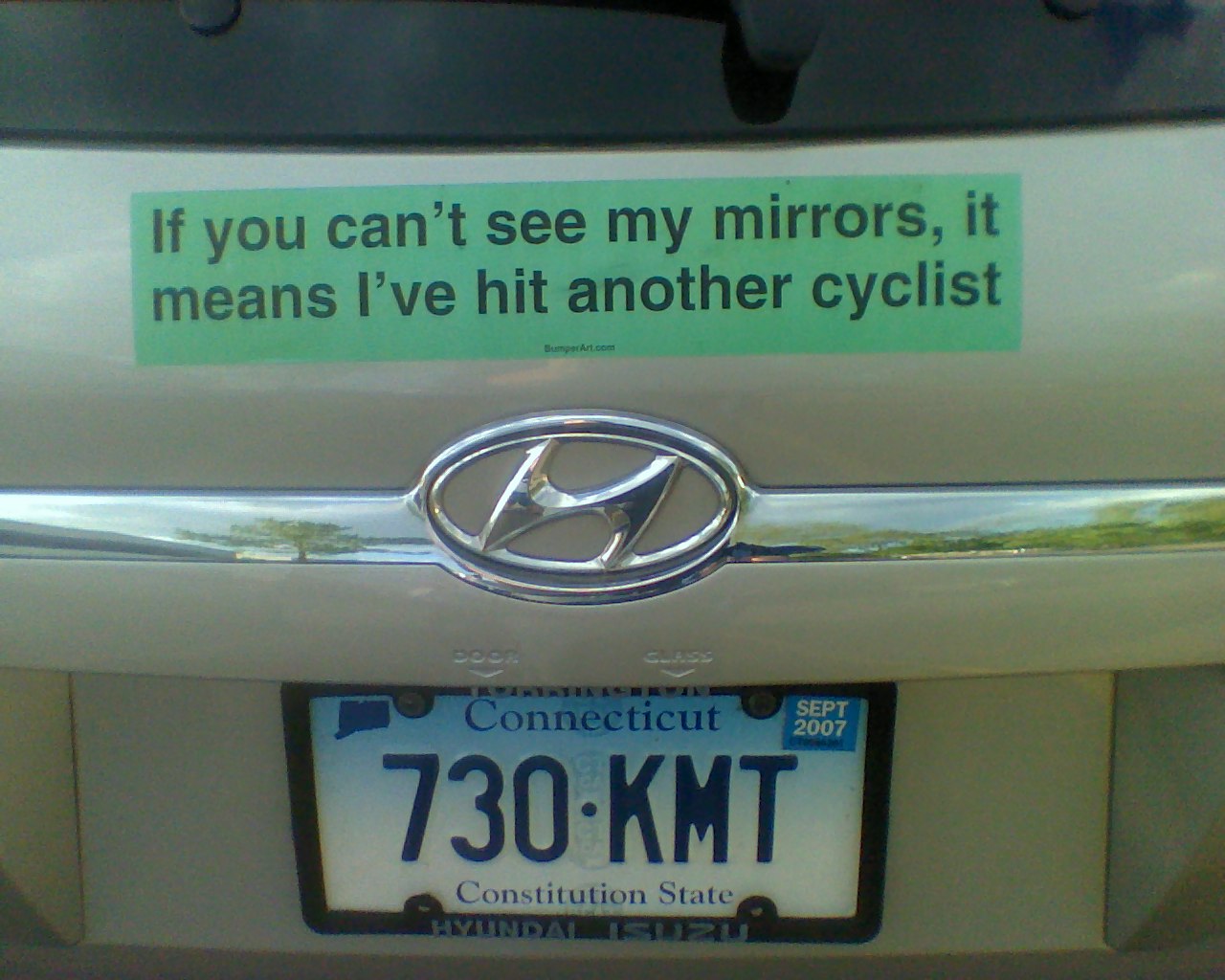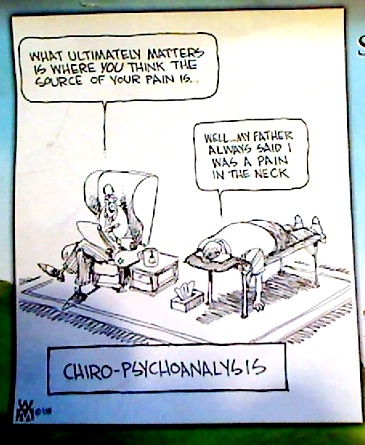 Fifteen years ago this week, I made the very long commute from Ansonia to Kent, and as a freshly-minted doctor, opened my doors to the public.
Oh, my...if I had only known what was in store for me.
Fifteen years ago this week, I made the very long commute from Ansonia to Kent, and as a freshly-minted doctor, opened my doors to the public.
Oh, my...if I had only known what was in store for me.
I had decided to begin practicing in the northwest corner because I knew that somewhere up here was where I wanted to raise my family, and at the recommendation of a doctor who at the time was practicing in New Milford. The good Dr. Hess has since passed away, but when I called him for advice for a place to open a practice, he said, "If I could do it all over again, I would have practiced in Kent."
So there, for better or worse, was where I started. On the largely-abandoned second floor of a building in the center of Kent, above a toy shop, as the "Kent Chiropractic Health Center," a name which to this day floats around the internet, cropping up in the search results from time to time. On that first day, I received a surprise delivery -- a ficus plant from my parents, to wish me good luck. I put it in the reception area.
Kent did turn out to be a wonderful place to start, and I developed good reputation there for treating muscle and joint problems. But my vision of being a chiropractic physician had always been broader than that, and while one might say my concept of a chiropractor as an alternative care primary care physician was forward-looking at the time, it was actually backward-looking. The early history of chiropractic is filled with chiropractors in rural America treating all manner of illness, naturally, using their hands and good food and their hearts to heal patients seeking a more humane form of treatment than the "heroic" medicine in vogue during the 20th century. It was not until the 1980s when chiropractors got painted into the back/neck corner, as mainstream medicine tried to contain the chiropractic threat to its pocketbook.
Only a few years after opening my practice, I returned to school for post-graduate education, while keeping my practice running. Those were busy years, as I hired my first employee, worked all day on Saturdays, and spent every fourth weekend at the Long Island clinic of the New York Chiropractic College, culminating in passing my board examinations and becoming one of Connecticut's few doctors who were board certified in clinical nutrition.
I also moved my office during that time, so that I was no longer above the toy store, but in what was then Kent's bustling Medical Center building. I shared the building with two MDs and the northern branch office of a radiologist based in Danbury. The ficus plant came with me. With my additional knowledge base and growing clinical experience, I began to expand out more and more from muscle and joint problems into treating people with other health problems.
Kent is one of those small towns which, lacking a diverse employer base, goes through boom-and-bust cycles. When I had opened my practice, Kent was on the cusp of a boom cycle, riding the dot-com wave with a local internet company, Cyberian Outpost.
When the dot-com crash came, Kent suffered a bit. The bustling medical center bustled not quite so much, as the radiologist closed his satellite office, one MD retired and the other moved. For quite a while, I was the sole occupant of the building, which occasionally felt like practicing in a ghost town.
Satellite Office
During that time, I noticed that I could find some office space cheap in Litchfield, and opened a satellite office there. I was in Litchfield two days a week, and Kent the rest of the time.
The Litchfield office surprised me. With little marketing, only word-of-mouth, my practice in Litchfield grew rapidly. I had two rooms -- a consultation room and an exam/treatment room in an office complex otherwise filled with mental health professionals, and it was during that time that I gained a deep understanding and respect for psychologists and clinical social workers. They, too, were drug-free professionals like me, choosing to treat people with mental illness with skill and finesse instead of the blunt tools of psychiatric medications. My association with this group led to my lecture presentation at the 40th annual meeting of the Connecticut Psychological Association.
And, of course, running two offices and lecturing weren't quite enough to keep me happily busy, so I continued with my education. This time, I added to my arsenal by pursuing postgraduate board certification in medical acupuncture, giving me what turned out to be a perfect trifecta in natural medicine -- chiropractic, herbs/nutrition, and acupuncture -- the 1-2-3 punch which has served my patients well ever since.
To reflect the growing cachement area of my practice, I again changed names, this time to "Northwest Chiropractic Health Center." After a few years in Litchfield, and after having moved my family here, I realized that in all likelihood, the future of my practice was going to be in this town. The Litchfield practice continued to grow, and I was increasingly stealing time from Kent to support my patient load in Litchfield. The Kent office's days were numbered, despite my enjoyment of that small, quiet town.
Opportunity struck when, of all things, a local veterinarian decided to move across the street. When I found that this office, on Route 202 only a mile from my house, was for sale, I knew where I wanted to be.
So I took a deep breath and jumped in. Of course, after the purchase, extensive renovations were required. I really didn't think my patients needed kennels, or a place to be hosed down after their treatment here. With much thanks to the now-retired Paul Mattson, who broke every rule in the contractor rulebook by finishing the project in budget and on time, I was ready to move my practice for the fourth -- and presumably final -- time.
That's not to say that there weren't a few hiccups along the way. I learned that any time your contractor calls and says "we need to have a meeting with the plumber," it's going to be an expensive meeting. I also learned that zoning regulations can be as obscure, dated and nonsensical as any New England blue law.
I once again changed corporate names, again for the last time. The change reflected the slow but inevitable transformation in the nature of my practice, as what had once been the Kent Chiropractic Health Center became the Center for Alternative Medicine.
Opening the new Center was an exercise in blindfolded tightrope walking, as I was simultaneously closing the Kent office. Trying to ensure a seamless transition, I closed down operations in Kent on Monday, and with the help of the entire Tuz family, moved everything to Litchfield in the space of two days. I was ready to begin seeing patients -- indeed, had already scheduled them -- except for the small but vitally missing Certificate of Occupancy.
On Wednesday, the Building Inspector came to his final inspection, during which he deemed one of the outlets in one of the treatment rooms too close to the sink. It must be converted to a special GFCI outlet before the CO would be issued.
I called Paul in a panic. His office assured me that this sort of thing happened all of the time, and I was not to worry. Again, it was a testament to Paul's prowess as a general contractor that he had the electrician out on Thursday morning to fix the outlet. The building inspector returned on Friday at 10 a.m., and certified the building. Minutes after he left the building, my first patient arrived.
I had expected to lose some of my patients as a result of the move, and for a time, I did. But over the past few years, more and more of those patients have returned to my care, and I am always glad to see one of my patients from Kent. We swap stories about the old days, and they bring me up to date on the happenings in Kent.
Another milestone was passed shortly after I opened the Center, as I suddenly realized I had begun treating the third generation of a family who had began seeing me in my early days in Kent. The adolescent children I had seen back then had grown to young adulthood and begun families of their own. Realizing that this entire family had depended on me for care through so many changes was enlightening. I was finally beginning to understand the richness and depth that being a family doctor brings. I didn't have to ask these patients about their family health history. I already knew it, and had participated in it.
The Center for Alternative Medicine also brought to fruition one of my long-held goals to bring multiple health disciplines under one roof, as Dave Pavlick, one of New England's experts in EEG neurofeedback moved his offices to the building. Once again, having a mental health professional, especially one of Dave's stature, has added an interesting dimension to my professional alliances.
The thread running through this history has been my patients. The woman with asthma, who was in the midst of an attack and had no inhaler. The man in the middle of a heart attack, who had just left his MD's office after receiving a diagnosis of a cold, and who told me "something just doesn't feel right." The patient with anorexia, whose last visit was less of a discharge than a sad goodbye, as we both knew she had utterly succumbed to this most awful disease. The patient who hugged me and said, "Thank you for giving me my life back."
It is not only those dramatic moments, but also the smaller, simpler ones -- when someone sits up on the adjusting table, rotates their head in directions impossible just minutes before, and says, "thanks a lot, Doc." Or who looks at me after I take the last acupuncture needle out and says, "that feels really good." It is really those times that keep me coming back to the office morning after morning and staying through the evening hours.
The warp to that woof is the learning. Being a doctor, especially the kind of doctor that I am, means that my education never stops. When I first began practice, nutritional analysis was in its infancy, and we had to rely heavily on questionnaires and history to deduce our patient's problems. Now nutritional doctors have an array of laboratory tests available to reduce the guesswork. And each patient visit, regardless of the problem or whether I have seen them before, is a 30-minute postgraduate course in health, if I only have the eyes to see and the ears to hear.
With 15 years of experience under my belt, and my first book on its way, I feel that I am poised on the precipice of what will be a second half equally as exciting as the first. I am excited about the new patients that I will see, new associates I will greet, and new challenges that I will meet (so long as they don't involve plumbing).
But most of all, I am thankful. Thankful to have had 15 years to serve my patients to the best of my ability and knowledge, and grateful to have received the trust of so many.
Though my parents have long since passed away, the ficus tree remains with me. It, like all other living things, has gone through periods where it hasn't been so healthy, was dropping leaves and looking barren. But with care and attention, it has always returned to health and continued to thrive. These days, it spends its summer next to the bench and the front door, and winters in the reception room, a reminder to me of that day long ago when a much younger doctor unlocked the door to all that would follow.
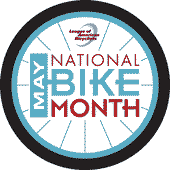













 Even if you don't follow health news closely, it would have been hard to miss the recent headlines as the diabetes drug Avandia went "on trial" before the FDA.
Even if you don't follow health news closely, it would have been hard to miss the recent headlines as the diabetes drug Avandia went "on trial" before the FDA.
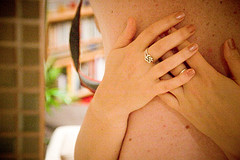 While on vacation last week, I had the opportunity (and the need) to do something I rarely do at home: Get a chiropractic adjustment.
The need was spurred by a headache subsequent to a 100-mile bike ride that saw me traverse Cape Cod from outermost Provincetown to downtown Hyannis, and back again. It was a pleasant trip, though exceedingly hot. And even though I ride a recumbent bicycle, which is far more comfortable for the neck over long distances than a standard upright, the recumbent in the extremely laid-back configuration can produce significant neck strain over time.
While on vacation last week, I had the opportunity (and the need) to do something I rarely do at home: Get a chiropractic adjustment.
The need was spurred by a headache subsequent to a 100-mile bike ride that saw me traverse Cape Cod from outermost Provincetown to downtown Hyannis, and back again. It was a pleasant trip, though exceedingly hot. And even though I ride a recumbent bicycle, which is far more comfortable for the neck over long distances than a standard upright, the recumbent in the extremely laid-back configuration can produce significant neck strain over time.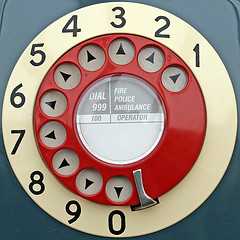
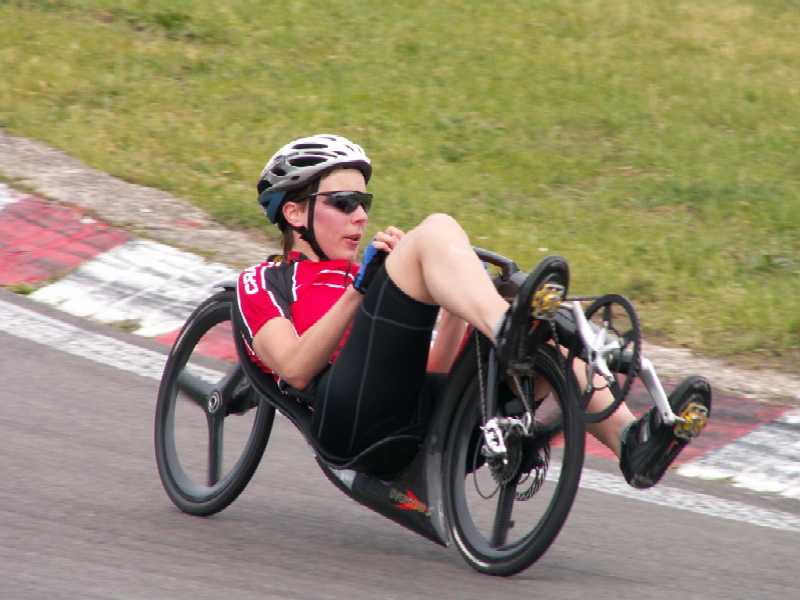 More bicycling than doctoring, but
More bicycling than doctoring, but 